Dusk on the Tagus River, looking toward April 25th Bridge
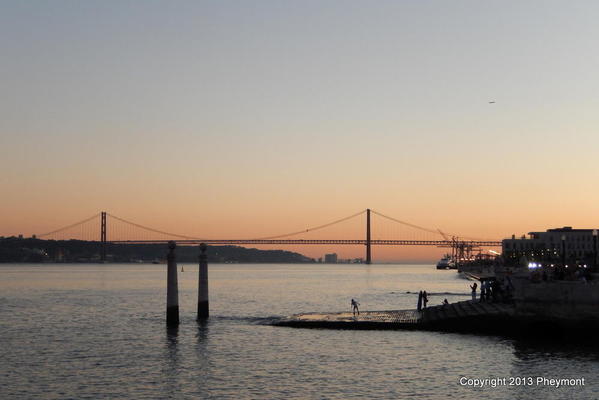 Every city’s history is reflected in its neighborhoods and its architecture, but in Lisbon’s case two important factors add to the picture. One is the incredible wealth that came to Portugal as the first, and one of the largest Atlantic empires, starting in the 15th century. The other is the 1755 earthquake that devastated most of the city: Thouands of buildings, collapsed, a tsunami drowned thousands who survived the earthquake, and fire raged through the ruins for days.
Every city’s history is reflected in its neighborhoods and its architecture, but in Lisbon’s case two important factors add to the picture. One is the incredible wealth that came to Portugal as the first, and one of the largest Atlantic empires, starting in the 15th century. The other is the 1755 earthquake that devastated most of the city: Thouands of buildings, collapsed, a tsunami drowned thousands who survived the earthquake, and fire raged through the ruins for days.
Truth told, it is probably only the wealth of the empire that allowed Lisbon to survive, and to undertake Europe’s first-ever planned urban rebuilding. On our trip last summer, we were struck with the evidences of imperial wealth and power and great beauty—but we were also struck by how much Lisbon talks of itself, more than 250 years later, in terms of “before” and “after” 1755.
 Contemporary view of the aftermath of the 1755 Earthquake
Contemporary view of the aftermath of the 1755 Earthquake
Lisbon has been important for a long time, in large part from its position on the long, broad Tagus River (Tejo in Portuguese) that flows into the Atlantic just a few miles away, and begins its journey almost 700 miles away in central Spain.
As with most European cities, Lisbon’s early history is a little foggy…was it a Phoenician trading city, or a customer for Phoenician goods? Does its name reflect the legend that it was founded by Ulysses on his way home from Troy? What is clear, is that the Romans took over the area after defeating Carthage around 146 BC, and they held it until the fall of the Roman Empire.
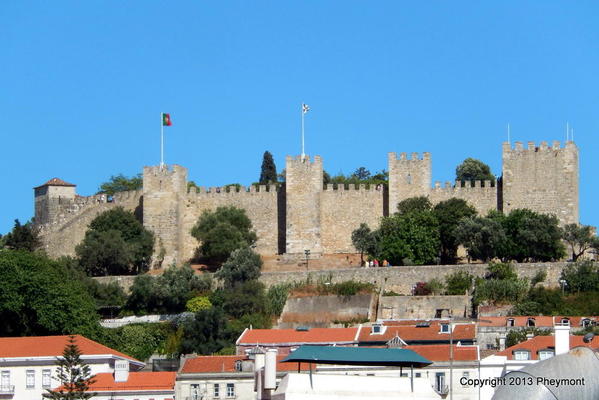 The next big-time rulers were the Moors, who held the city from 711 AD until 1147 when it was conquered by Christians. It’s been Portugal’s capital since 1255. Traces from almost all of these eras can be found in the city today, as well as a touch of late 19th-century modernism and some touches of late 20th-century as well.
The next big-time rulers were the Moors, who held the city from 711 AD until 1147 when it was conquered by Christians. It’s been Portugal’s capital since 1255. Traces from almost all of these eras can be found in the city today, as well as a touch of late 19th-century modernism and some touches of late 20th-century as well.
The oldest area of Lisbon today is the Alfama, on a hill above the river, capped by a St. George’s castle, once Moorish and then Christian. That description applies to many things in Portugal and Spain, and that includes Lisbon’s Cathedral Se.
Lisbon’s Cathedral is a mix of styles. It was begun in 1147, right after the Christian conquest, and on the site of the main mosque. Excavations over the years indicate the site has actually been in use, sometimes for religious uses, back to Roman times. Over the years, different kings added on to it, rebuilt it after fires and earthquakes. In the early 20th century, a few hundred years of dÉcor was peeled back to give the present medieval appearance. But what fascinated me most about the cathedral was not the hand of man, but the reminder that nature will find its way into the picture.
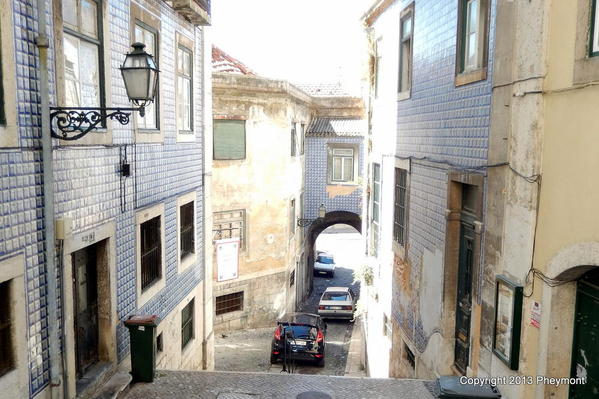 The arch at the bottom of the street is an ancient gate in the Moorish city wall
The arch at the bottom of the street is an ancient gate in the Moorish city wall
The Alfama area (most names in Portugal that begin with al- are remnants of Arabic names; ‘al-‘ means ‘the' is Lisbon’s oldest, and because of its height, it survived the immense Lisbon earthquake and tsunami of 1755, which destroyed the lower city and burned much of the rest. It is known for its narrow alleys, twisting streets and close family ties. Although many residents find it cramped and rundown, rents have been frozen since the 1970s, and new housing at the edges of the city is expensive. Here are a few more views of the Alfama, showing its narrow, steep passages and houses built directly onto remnants of the Roman and Moorish walls.
The wealth of Lisbon and its importance from 15th century on stems from Portugal’s colonial and trading empire, once one of the world’s largest, and lasting into the 20th century. The wealth that came from its outposts in Brazil, in Africa and the far east allowed the Portuguese rulers to go on a building spree for a few centuries, reflected in such massive buildings as the Jeronimos monastery (below) at Belem, closely connected with Portugal’s explorations, and its navigation school started by Prince Henry the Navigator.
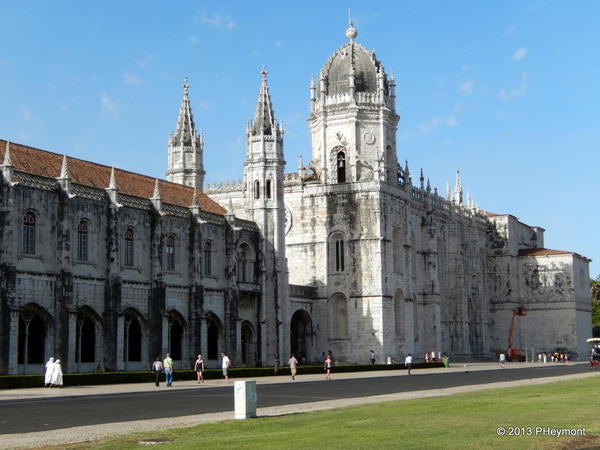 Inside Jeronimos are great examples of Portugal’s unique late-Gothic Manueline style, named for King Manuel I who encouraged building and growth. The style combines great small detail with ornate fixtures, and often includes marine motifs. The example here is at Jeronimos.
Inside Jeronimos are great examples of Portugal’s unique late-Gothic Manueline style, named for King Manuel I who encouraged building and growth. The style combines great small detail with ornate fixtures, and often includes marine motifs. The example here is at Jeronimos.
Nearby, on the river, is the Tower of Belem, both a defense point and a monument to the power and vanity of the rulers. Originally it was surrounded by the river and reached by boat or footbridge; today the shore has caught up with it.
The wealth of the Portuguese empire depended not only on trade in spices, metals, crops and other commodities; the slave trade from West Africa had a strong foothold in Portugal, and the entire economy of its Brazilian colony was built on that. The tile wall below, in the city’s history museum, shows a slave woman at the center of symbols of Portuguese trade.
After the 1755 disaster, the king of the time was so shaken by the events he never slept indoors again (think luxury Tent City) and when his prime minister, the Marquis of Pombal redesigned and rebuilt the city, he didn’t include a royal palace. The main rebuilt area is the downtown section called Baixa (or lower). With ornate pavements and similar building styles, the area is a major luxury shopping zone today, just inland from the huge Praca do Comercio square.
What’s under the skin is almost as interesting: Pombal planned not only a modern street grid, but prepared for future shocks. Pombal and his engineers designed a wooden framework, known as Pombal’s Cage, that not only provides earthquake resistance, but allowed much of the rebuilding to take place off-site: arguably an early example of modular construction.
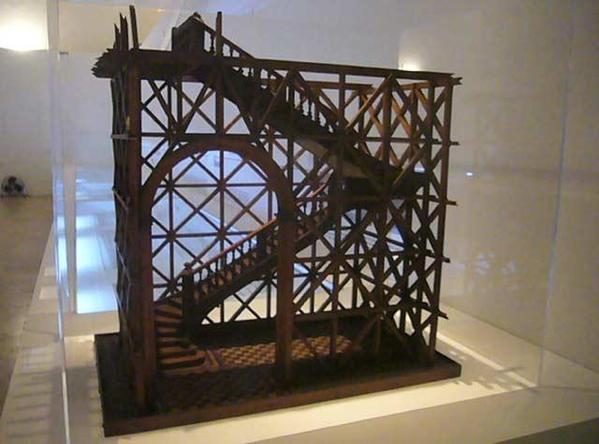 Courtesy Wikimedia Commons/Galinhola
Courtesy Wikimedia Commons/Galinhola
By the 19th century, and especially after the Napoleonic wars, which were followed by an armed struggle between two branches of Portugal’s royal family, Portugal’s wealth ebbed along with its empire. When modernism, in one form or another, took root in many European countries, Portugal largely continued copying classic and Manueline styles in its major buildings, although spots of lettering and detail pop up here and there, including the Rossio rail station and the store facade below.
The big 19th century innovation in Portuguese architecture was actually a very old one: tiles, called azulejas, covering exterior walls of buildings. What had once been an expensive decoration for areas in churches and palaces now became available to nearly everyone as mass production of the tiles was introduced in the 1840s by Brazilian immigrants to the northern city of Porto. You can still see a lot of it all over Lisbon today, although often in need of repair due to cost.
Since the end, in 1974, of Portugal’s long-running dictatorship under Salazar, there has been a spurt in development and use of new styles. That’s especially reflected in the Parque da Nacoes (Park of Nations) area developed around the time of the 1998 Expo that celebrated the 500th anniversary of Vasco da Gama’s expeditions.

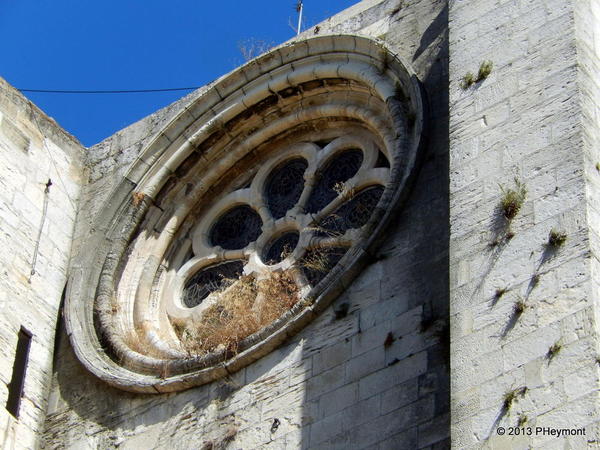
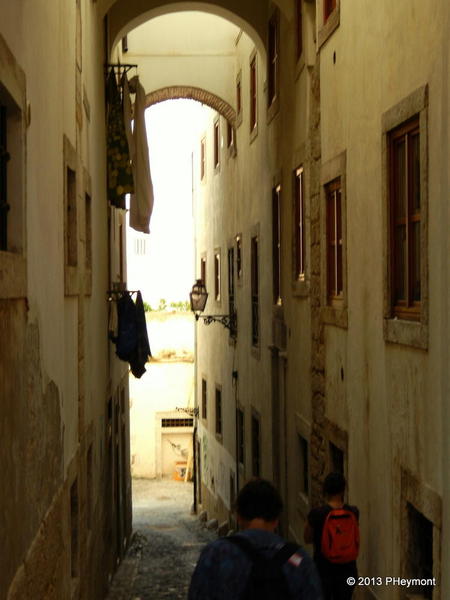
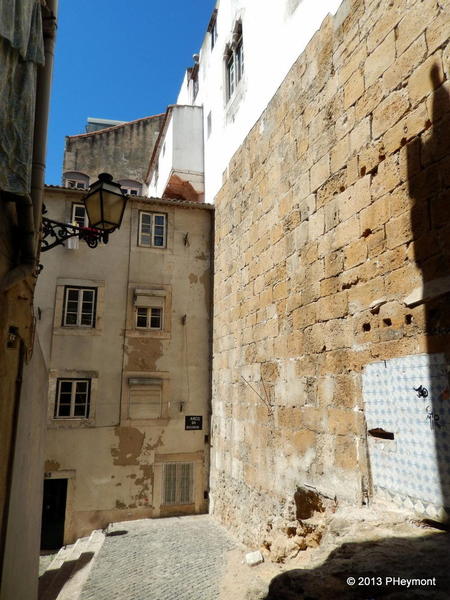
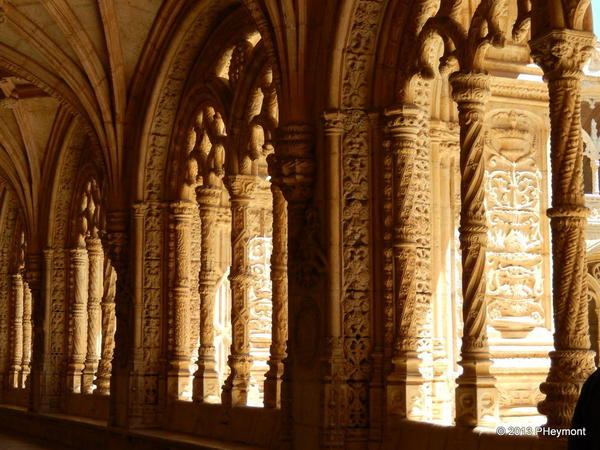
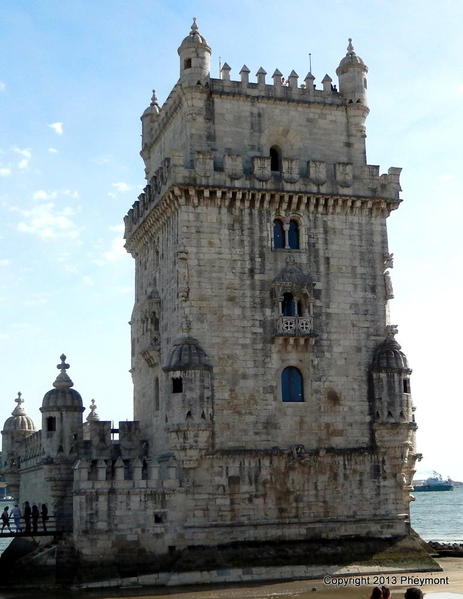
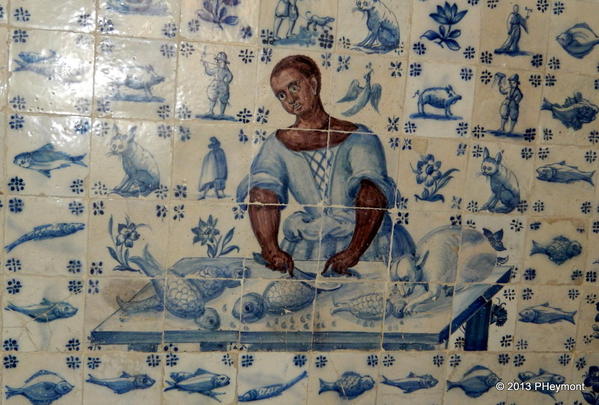
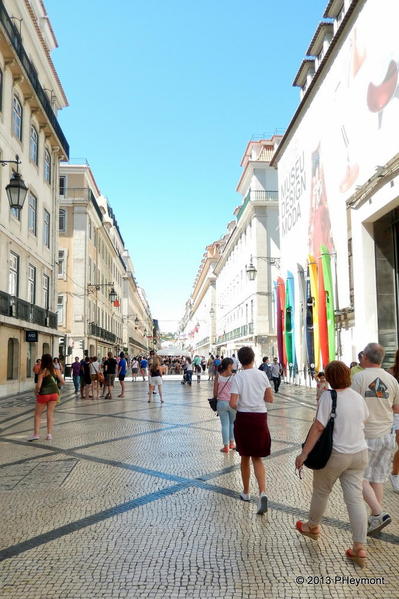
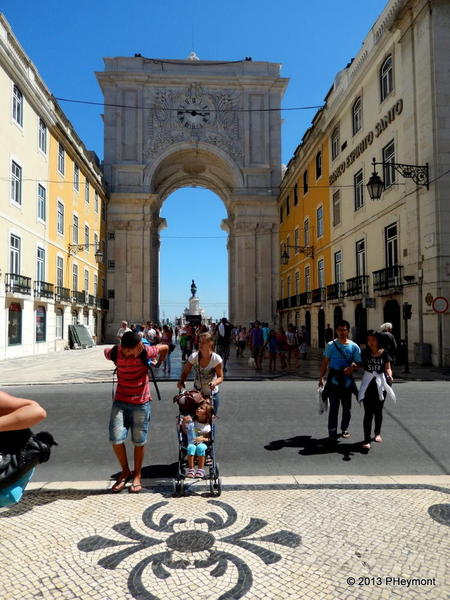
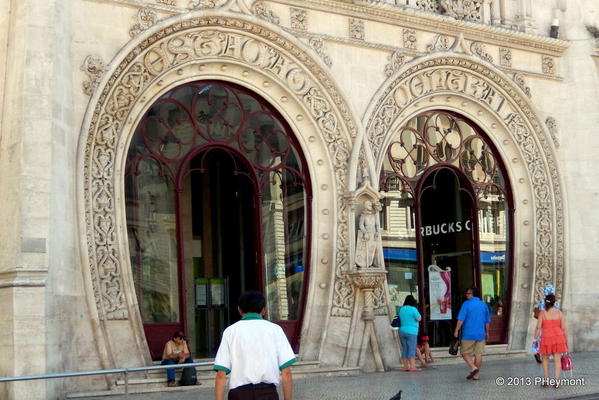
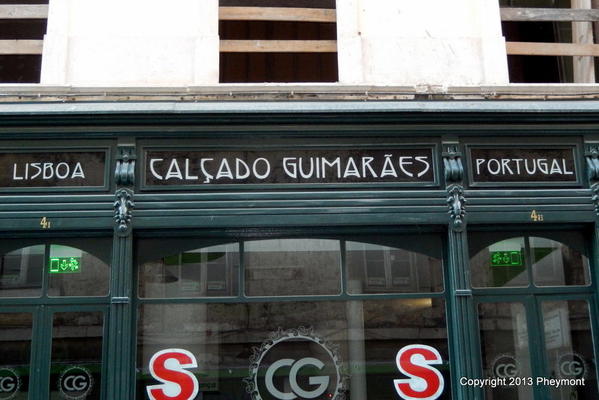
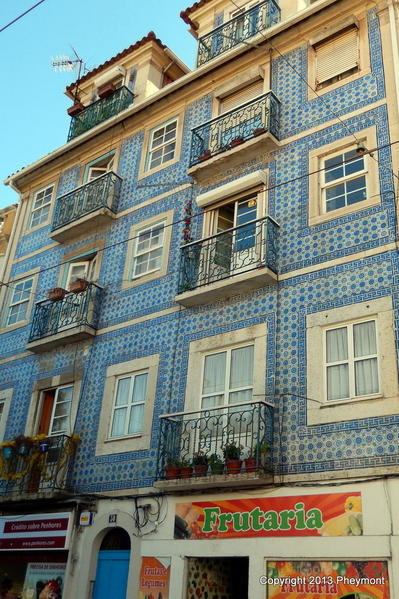
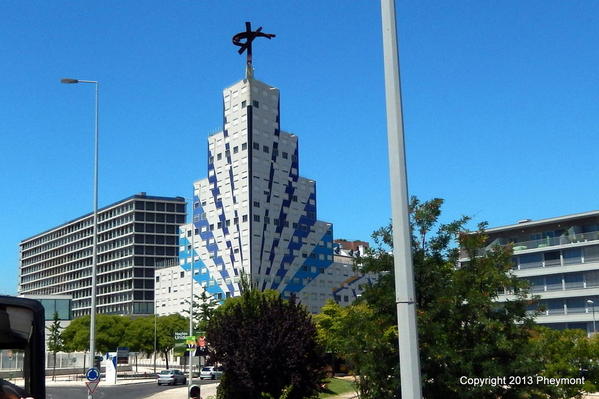
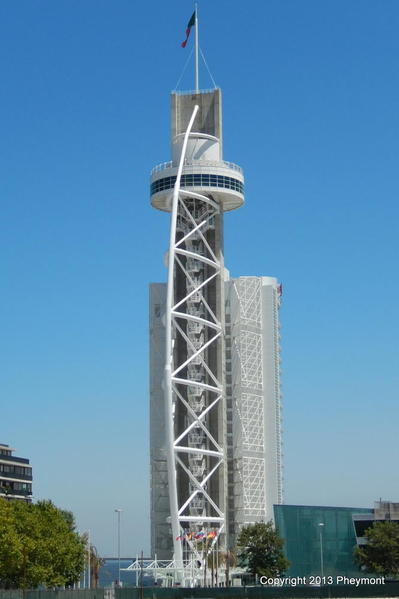

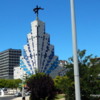
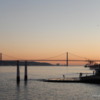

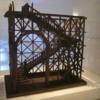
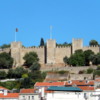
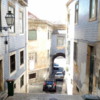
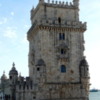











Comments (0)